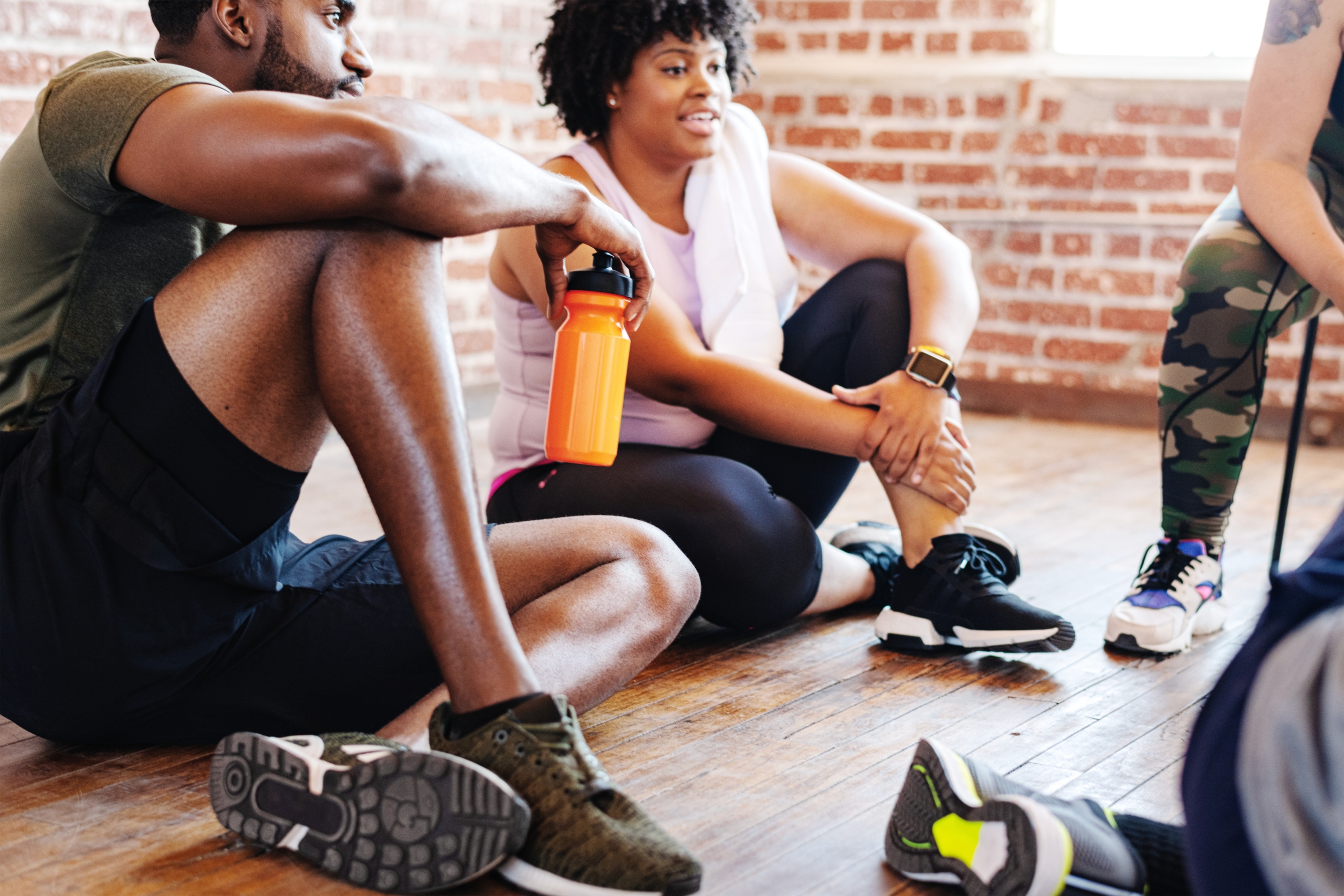Last Updated on July 18, 2025 by Laura Jensen
Staying hydrated is essential during any exercise class, but with so much advice out there, it can be hard to know what really matters.

Here are six practical tips and key insights to help you, and your class attendees, stay properly hydrated when taking part in exercise classes.
1. Understand the importance of hydration
Water makes up around 55-60% of your body weight and has many important functions within the body, including regulating temperatures, transporting nutrients in the blood, removing waste products and acting as a shock absorber and lubricant to joints. Water can be found in a number of different forms, not only from water in its pure form, but also in other drinks such as milk, fruit juices, soft drinks, caffeine-free tea and coffee, and even the food you eat.
The Eatwell Guide recommends 6-8 glasses of fluid per day to achieve adequate hydration, however more fluid may be necessary when taking part in exercise classes.
2. Recognise the effects of dehydration
Now that we’ve covered the importance of hydration, it’s crucial to next understand what the early signs of dehydration are so that you can address them if any of your participants become dehydrated within your class.
The most common signs to be aware of are:
- Thirst and a dry mouth (you are already dehydrated if feeling thirsty)
- Fatigue and lethargy
- Headaches and dizziness
- Muscle cramps or spasms
- A decreased urine output
Studies have shown that at even just 1% dehydration (equivalent of 1% of body weight water loss), there are clear negative effects on mental and physical function. These become worse as dehydration continues.
3. Be aware of conditions that can influence hydration
When leading an exercise class, it’s crucial to be aware of the influences on hydration, so that you can prepare both the space and your routines to make sure your attendees don’t get dehydrated.
Firstly, consider the environmental conditions of the space you’re teaching in. Make sure it’s not too hot, is adequately ventilated and shaded; hot and humid environments can bring on the effects of dehydration much more quickly.
Additionally, the intensity and duration of the class can also contribute. Longer and more intense classes will require a greater intake of fluid in order to counteract the loss of water and electrolytes.
Individual characteristics can also play a part, including pre-existing health conditions, age, gender and body composition. We’ll go into this in more detail in the next point.
Finally, clothing and equipment can influence hydration levels. Heavy or dark clothing can increase the dehydration rate and some equipment, including heart rate monitors, may have additional hydration requirements.
4. Assess attendees for any influencing factors
As mentioned above, individual characteristics can play a part in hydration and dehydration and it’s up to you as the Instructor to assess any conditions that might impact any of your participants.
Age is the easiest factor to assess. As advised by the NHS, babies, children and older adults are more at risk of dehydration. Make sure to assess their thirst levels and encourage both to drink regularly even if they don’t seem thirsty.
Conditions such as diabetes, gastrointestinal disorders, kidney disease and certain autoimmune diseases can also have an impact on hydration levels. These are important to identify with your participants before they take part in your classes. If you are working with class attendees with controlled conditions, ensure you are within your scope of practice and hold the required level of qualification.
Finally, it’s important to be aware of a condition known as hyponatremia. This is a condition which occurs when too much water has been drunk and the sodium levels in our bodies become too diluted. Dr Paul Batman has a great piece which outlines this condition in more detail and shares some advice on addressing it.
5. Promote hydration breaks during classes
In order to avoid dehydration occurring, there are some easy accommodations you can add to your classes to promote hydration.
It’s recommended to provide water breaks around every 10-20 minutes so you might want to adjust your routines to accommodate more frequent breaks. This could also be simply introduced as hydration reminders or alarms on your phone to promote taking a break and getting a drink of water.
Additionally, if your class’s duration is over an hour, you may want to recommend that your participants bring and drink sports drinks to help replenish electrolytes and fluid more quickly.
If they are drinking sports drinks, you want to ensure that the drink is classed as ‘hypotonic’. This is approximately 3-4% concentration i.e. the carbohydrate or electrolyte content is approximately 3%. This is where the concentration of the sports drink is less than the blood and therefore the fluid enters the blood more quickly than just water. If a drink is ‘hypertonic’ (more than 6-10% concentration) this will slow down hydration as this is where the concentration of the sports drink is higher than the blood and will therefore slow down the rate it leaves the stomach into the blood.
6. Recommend post-class rehydration
Your responsibility for your participants’ hydration doesn’t end at the end of your class. You can still send them away with advice in order to make sure they don’t become dehydrated following their exercise.
It’s recommended that you should drink one and a half times the fluid lost during exercising. Advise your participants to follow this approach and also continue to monitor their hydration status after exercise.
Also, consuming a balanced meal or snack, including carbohydrates and protein, within 30-60 minutes after exercise can also benefit hydration. Remember, fluid isn’t just found in our drinks, but also in our food.
If you’re looking for more advice on hydration and specifically teaching during warm weather, why not check out our blog on the topic, or join our membership to access a host of free resources to assist with any aspect of your classes.
Source: British Nutrition Foundation, NHS, BUPA UK, NIKE

EMD UK is the only governing body dedicated solely to the group exercise community. Our members benefit from our guidance, CPD-accredited courses and over 250 resources. Pro membership with insurance starts from just £51 annually.

